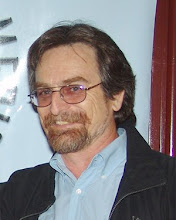“But in these plethoric times – when there is too much coarse ‘stuff’ for everybody and the struggle for life takes the form of competitive advertisement and the effort to fill your neighbor's eye, when there is no urgent demand either for personal courage, sound nerves or stark beauty – we find ourselves by accident.
“Always before these times, the bulk of the people did not overeat themselves because they couldn't, whether they wanted to or not, and all but a very few were kept ‘fit’ by unavoidable exercise and personal danger.
“Now, if only he pitch his standard low enough and keep himself free from pride, almost anyone can achieve a sort of excess. You can go through contemporary life fudging and evading, indulging and slacking, never really hungry nor frightened nor passionately stirred, your highest moment a mere sentimental orgasm, and your first real contact with primary and elemental necessities the sweat of your deathbed.” – H G Wells
~ ~ ~
One of the uncomfortable things about documentaries (and perhaps one major reason that certain docs are not popular) is that they present us with challenges – moral and ethical challenges, challenges to what we have ‘learned’ and to our thinking.
It is easy for the uninformed to come to an opinion – all one must do is to look at a situation and decide that it is right or wrong, entirely based on one’s preconceived notions.
But a thoughtful and well-researched documentary on a tough subject removes our ability to evade and fudge. Seeing the evidence of our thoughtless collective actions (global warming, over-consumption, wasteful uses of natural resources) puts the viewer in an uncomfortable spot, and it is a discomfort that the doc usually can’t hope to alleviate.
This is one excellent reason to include such challenging examinations into our narratives. The inclusion can be very subtle, such as one used in The Brave One, directed by Neil Jordan. The film’s protagonist (played by Jody Foster) was originally a police-beat reporter. But Foster, a self-admitted ‘NPR fanatic,’ thought that making the protagonist an NPR personality who studied New York City through its sounds.
This change served, as it turns out, a number of purposes. First, it made the protagonist much more internal and isolated from connection with people, while at the same time giving her a unique view of the world around her. Second, it solved a script problem that possibly had not come up until the change – any crime-beat reporter would have had much more knowledge of police procedure than Foster’s character had, so her naiveté would make much more sense if she had another, less-informed career. And third, NPR got some minor billing, which means that perhaps some of the audience dialed in for the first time and found something that cannot be found on standard radio.
The Brave One, while not a masterpiece, is still a solid piece of filmmaking, as might be expected from Mr Jordan. And while that single alteration in the story and script did not change the theme of the film, it did create profound changes in the film’s plot, sound design, production design, sets, and characterization.
In the case of those tough documentary subjects mentioned at the top of this piece, the narrative may come to a slightly different turn, but one no less personal in its application. Any of the tough subjects can be placed a bit in the background (what we call in journalism ‘burying the lead’) by starting the story with the person or persons most affected by the event or situation –say, the Hindi farmer facing starvation because of major climate shifts, or the havoc wreaked for local residents by land abuses such as strip-mining or deforestation. Alternately, the narrative of a documentary about over-consumption could start with the ‘birth’ of a consumer product that then goes through its ‘life’ until it is finally ‘laid to rest’ in a landfill. These techniques can potentially humanize the themes of a project, making it more accessible to more segments of the audience.
So while we are focused on the narrative during this time of our Caligari Narrative Contest, it would be good to review such alterations in narrative that can enliven or otherwise enhance a story. ‘Narrative,’ derived from the Latin verb narrare (‘to recount’), is related to the adjective gnarus (‘knowing’ or ‘skilled’), becoming by connotation ‘a skilled recounting’ of events. And because stories are a profoundly important aspect of culture, making up the basis of a society’s literature and philosophy, it is only through ‘skillful recounting’ that a work of art becomes possible.
So if we aim for art in our work, we should always be concerned with the narrative, even in the stories told in single-frame pieces such as photographs and paintings. And, of course, in our films – including documentaries and even 30-second commercials or PSAs – the narrative becomes the dividing line between mediocrity and art.
David Hakim is an assistant director, producer, and publicity expert who developed campaigns for every major Hollywood studio and handled publicity for the Motion Picture Academy. Find him in the Reel Directory online: www.reeldirectory.com.
All material copyright 2008 David Hakim and may not be duplicated - ALL RIGHTS RESERVED.
sábado, 28 de marzo de 2009
Uncomfortable Documentaries & Narrative
Etiquetas:
David Hakim,
documentary,
film,
film. movie,
H G Wells,
The Brave One
Suscribirse a:
Comentarios de la entrada (Atom)





No hay comentarios.:
Publicar un comentario